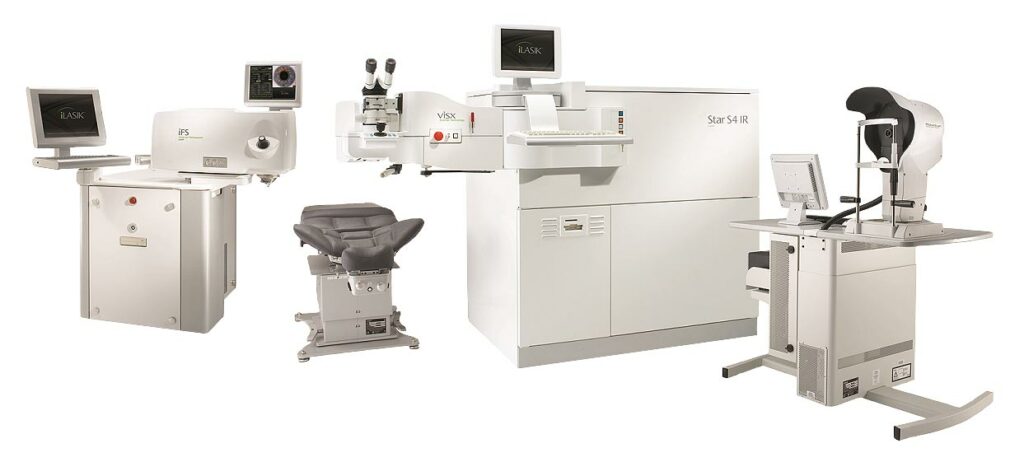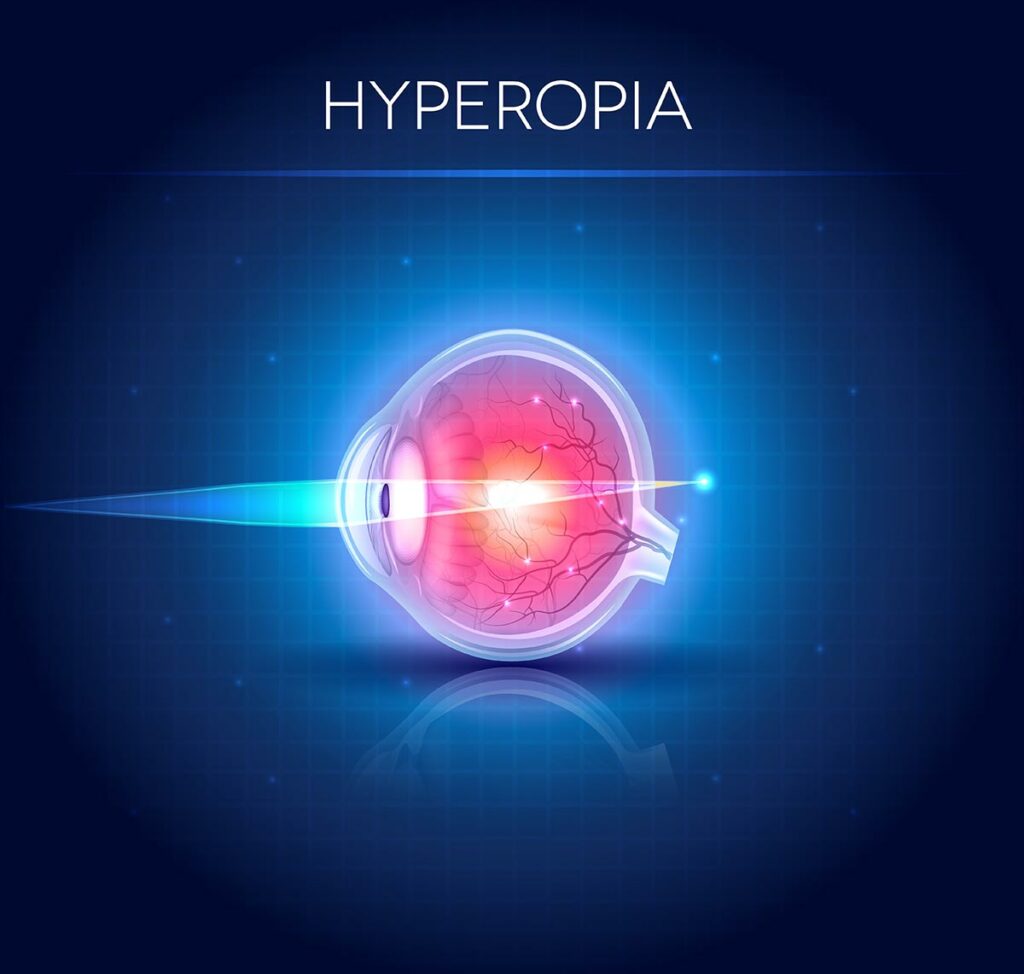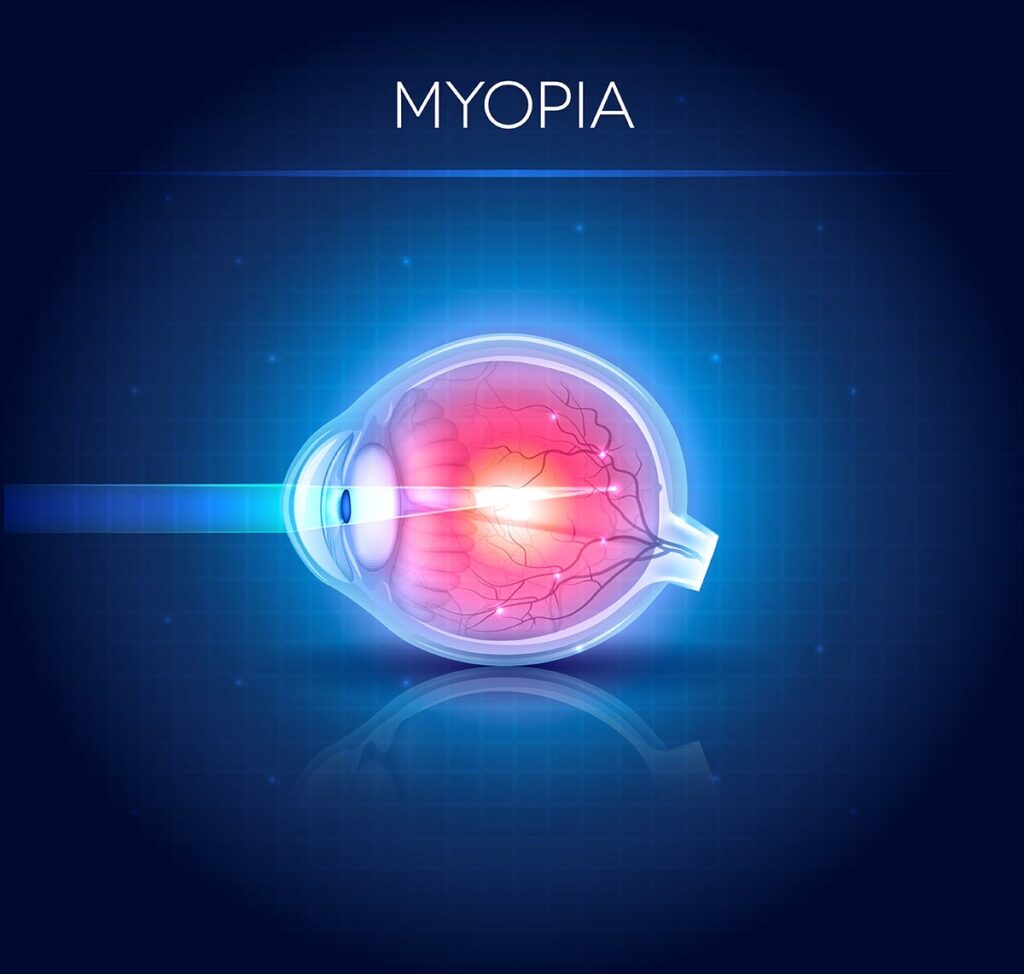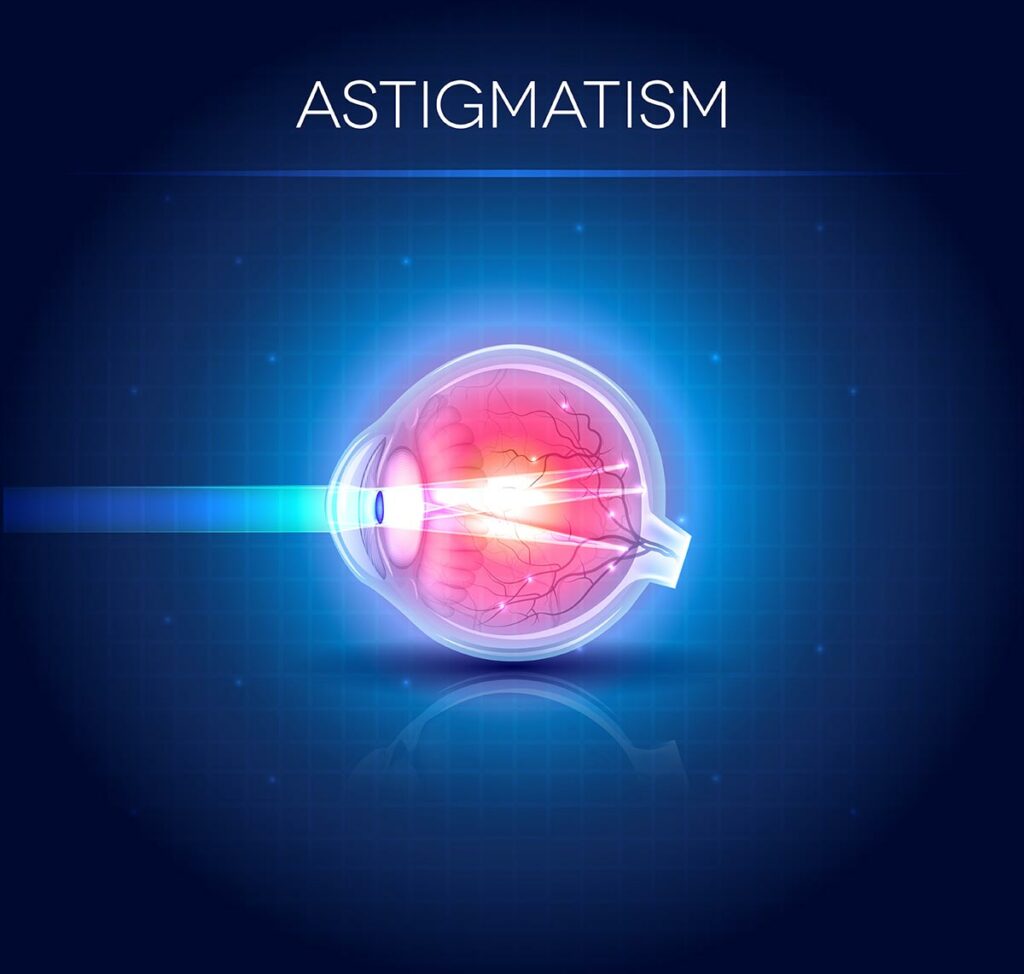LASIK Eye Surgery in Albuquerque
Eye Associates of New Mexico can perform LASIK eye surgery and other refractive surgery procedures at our facility in Albuquerque, New Mexico. The goal of laser vision correction refractive surgery is to change the focus of the eye to decrease dependence on prescription eyeglasses or contact lenses. LASIK refractive eye surgery can treat nearsightedness, farsightedness, astigmatism, reliance on reading glasses, and fix cataracts.
At our LASIK Eye Surgery Center in Albuquerque, we offer one of the finest LASIK surgery venues equipped with seasoned ophthalmologists who aim to improve our patients’ vision.
Albuquerque LASIK Center Location
To get to Eye Associates of New Mexico at 5757 Harper Dr NE in Albuquerque, New Mexico, start by heading to the intersection of San Mateo Blvd NE and Interstate 25. Take Interstate 25 north and exit at Montgomery Blvd NE (Exit 228). From there, turn right onto Montgomery Blvd and head east for about 0.5 miles. Turn left onto Harper Dr NE, and Eye Associates will be on your right, just past the Lowe’s Home Improvement store.
Landmarks near the clinic include the Arroyo del Oso Golf Course and the Albuquerque Academy. Parking is available directly at the clinic, with easy access to the entrance from Harper Dr.
What is LASIK?
LASIK is a laser procedure that is performed under the surface of the cornea. During LASIK surgery, a femtosecond laser is used to create a flap on the front third of the cornea allowing the excimer laser correction to be done underneath the surface. The front “flap” is then gently laid back down and is self-healing. LASIK allows for the rapid return of vision with little discomfort and quick return to normal activities.
This improves vision by reshaping your eye’s cornea. That’s the clear outer layer at the front of your eye. LASIK can treat nearsightedness, farsightedness, and astigmatism.
Take our LASIK self-test to see if you are a good candidate.
LASIK Technology
Eye Associates of New Mexico is pleased to offer IntraLase technology. IntraLase allows for a truly blade-free LASIK procedure. The IntraLase laser is a femtosecond laser developed by Johnson and Johnson, which allows a precision laser cut of the LASIK flap. The LASIK treatment is then performed with the excimer laser.
Eye Associates of New Mexico offers custom LASIK treatment technology with the iDesign system. The iDesign takes a very precise and custom measurement of your cornea using wavefront aberrometry. This customized scan is used to determine the treatment of your cornea, allowing the correction of nearsightedness, farsightedness and astigmatism, while also correcting more subtle visual aberrations known as “higher order” aberrations. Serving the Albuquerque and New Mexico areas, schedule an appointment with our LASIK Surgeons today.

How Much Does LASIK Surgery Cost?
The cost of LASIK eye surgery in Albuquerque can vary based on several factors. At Eye Associates of New Mexico, a LASIK procedure typically costs a couple thousand dollars per eye, including pre-operative testing, post-operative visits, and any necessary laser vision correction touch-ups.
Talk to your insurance provider if you qualify for coverage. Our LASIK Eye Surgery Center in Albuquerque can check for any applicable coverage and offer financing options, including FSA or HSA usage and payment plans.
Eye Associates of New Mexico offers a FREE LASIK consultation and evaluation. Our fellowship-trained, board-certified LASIK doctors and ophthalmologists ensure the best care for your vision.
Learn more about costs and financing options available at Eye Associates of New Mexico.
What is Photorefractive Keratectomy (PRK)?
PRK is a procedure that uses the excimer laser to gently sculpt the surface of the cornea into a new shape in order to correct either myopia, hyperopia, or astigmatism. Results with PRK have been excellent and we now have data extending back nearly 2 decades. The healing time after PRK can take several weeks.
EVO ICL is an implantable contact lens that corrects common vision problems such as nearsightedness (myopia) and astigmatism. The lens is made of Collamer®, which is a biocompatible material that works in harmony with the eye. The lens, which is slightly smaller than a typical contact lens, is implanted in the eye during a 20 to 30 minute procedure. Unlike laser vision surgeries that permanently change the shape of the cornea, the EVO ICL procedure is additive, meaning that no corneal tissue is removed, and reversible. Worldwide, more than 2 million EVO ICL lenses have been implanted.
What is Farsightedness?

Farsightedness, or “hyperopia,” is the opposite of myopia, or in other words, nearsightedness. This occurs when the eyeball is too short, or the focusing power of the lens or cornea is too weak, preventing light from focusing sharply. As a result, the retina processes a blurred image. Typically, the cornea is spherical, like a basketball. Farsightedness can be corrected with corrective eyewear like glasses or contact lenses or by undergoing LASIK surgery. Refractive LASIK surgery can be an effective solution for many people with farsightedness, providing clear, sharp vision correction.
What is Nearsightedness?

Nearsightedness, also known as myopia, occurs when the eye focuses light too sharply due to the length of the eyeball or the focusing power of the cornea or lens. As a result, the retina processes a blurred image. Nearsightedness can be corrected with corrective eyewear like prescription glasses, contact lenses, or refractive surgery. LASIK surgery can be an effective solution for many individuals who experience nearsightedness. Refractive surgery can be an excellent option, providing laser vision correction with sharp, clear vision.
What is Astigmatism?

Astigmatism describes the oval shape of the cornea, resembling a football. This shape causes light to be spread into a smeared or double image. Astigmatism can be corrected with glasses, corrective lenses, or a LASIK procedure. LASIK surgery is a highly effective solution for many people with astigmatism, providing improved vision.
LASIK Eye Surgery FAQ
Interested in Pursuing LASIK Surgery?
Our eye surgeons are dedicated to excellence in refractive surgery. We offer LASIK, PRK, and ICL consultations in select locations across the state for anyone interested to learn more about the procedure and finding out if it is a good option to correct their vision. Contact us at your convenience for your free refractive surgery screening and consultation.
Meet Your LASIK Surgeons
The LASIK doctors at Eye Associates of New Mexico have over 75 years of combined experience and have performed thousands of procedures in our LASIK clinics. Eye Associates is dedicated to offering personalized care, state-of-the-art LASIK techniques, and the latest LASIK technology.
At Eye Associates of New Mexico LASIK Eye Surgery Center in Albuquerque, we provide LASIK eye surgery procedures by a certified LASIK surgeon. All our LASIK eye surgery specialists live right here in New Mexico, are board certified, have expertise in treating routine and complex surgery, and can correct refractive errors.
Learn about our LASIK surgeons listed below and see why LASIK might be the best choice for improved vision at our Eye Surgery Center in Albuquerque.
Schedule a consultation, today to get perfect vision with the right LASIK eye surgeon!



